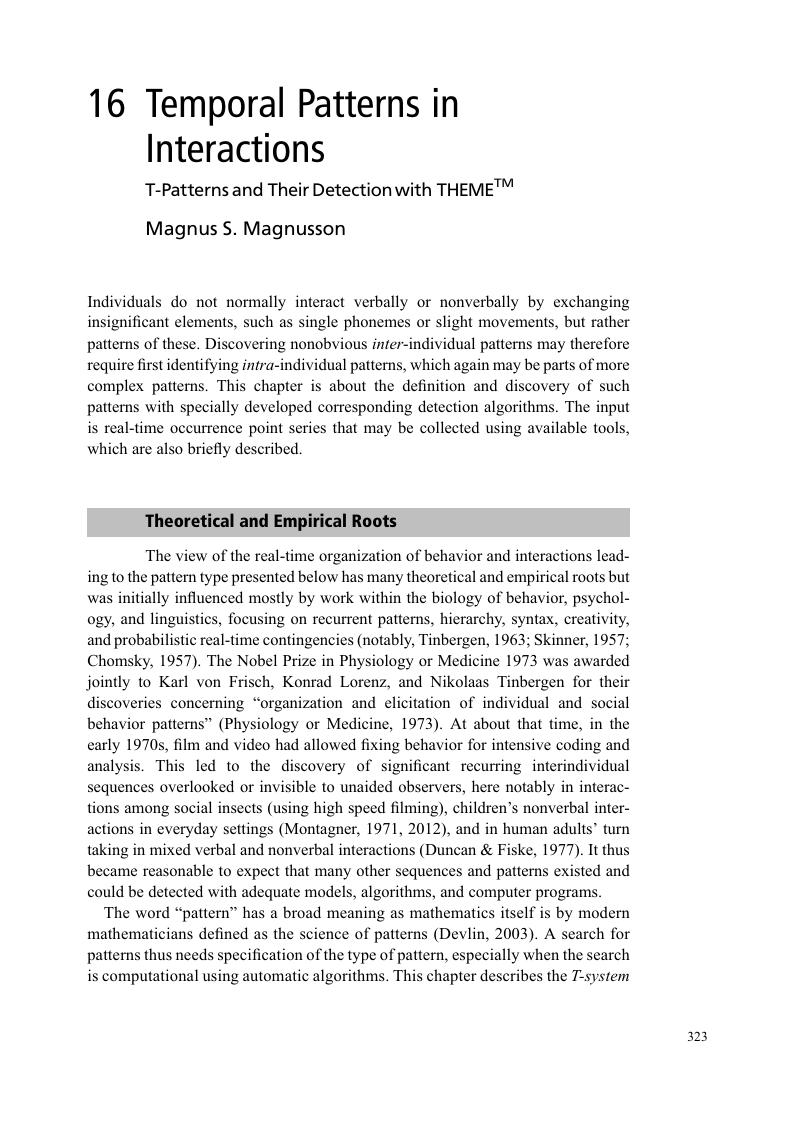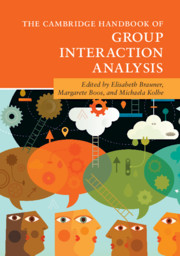Book contents
- The Cambridge Handbook of Group Interaction Analysis
- The Cambridge Handbook of Group Interaction Analysis
- Copyright page
- Dedication
- Contents
- Figures
- Tables
- Contributors
- Editors’ Preface
- Organization of This Handbook
- How to Work with This Handbook
- Part I Background and Theory
- Part II Application Areas of Interaction Analysis
- Part III Methodology and Procedures of Interaction Analysis
- Part IV Data Analysis and Data Presentation
- 14 Coding and Counting
- 15 Analysis of Interaction Sequences
- 16 Temporal Patterns in Interactions
- 17 Interdependence in Small Group Discussion
- 18 Coding and Analyzing Multiple Levels
- 19 Introduction to Machine Learning
- 20 TINT
- Part V Coding Schemes for Interaction Research
- Appendix
- Index
- References
16 - Temporal Patterns in Interactions
T-Patterns and Their Detection with THEMETM
from Part IV - Data Analysis and Data Presentation
Published online by Cambridge University Press: 19 July 2018
- The Cambridge Handbook of Group Interaction Analysis
- The Cambridge Handbook of Group Interaction Analysis
- Copyright page
- Dedication
- Contents
- Figures
- Tables
- Contributors
- Editors’ Preface
- Organization of This Handbook
- How to Work with This Handbook
- Part I Background and Theory
- Part II Application Areas of Interaction Analysis
- Part III Methodology and Procedures of Interaction Analysis
- Part IV Data Analysis and Data Presentation
- 14 Coding and Counting
- 15 Analysis of Interaction Sequences
- 16 Temporal Patterns in Interactions
- 17 Interdependence in Small Group Discussion
- 18 Coding and Analyzing Multiple Levels
- 19 Introduction to Machine Learning
- 20 TINT
- Part V Coding Schemes for Interaction Research
- Appendix
- Index
- References
Summary

Information
- Type
- Chapter
- Information
- The Cambridge Handbook of Group Interaction Analysis , pp. 323 - 353Publisher: Cambridge University PressPrint publication year: 2018
References
Accessibility standard: Unknown
Why this information is here
This section outlines the accessibility features of this content - including support for screen readers, full keyboard navigation and high-contrast display options. This may not be relevant for you.Accessibility Information
- 13
- Cited by
